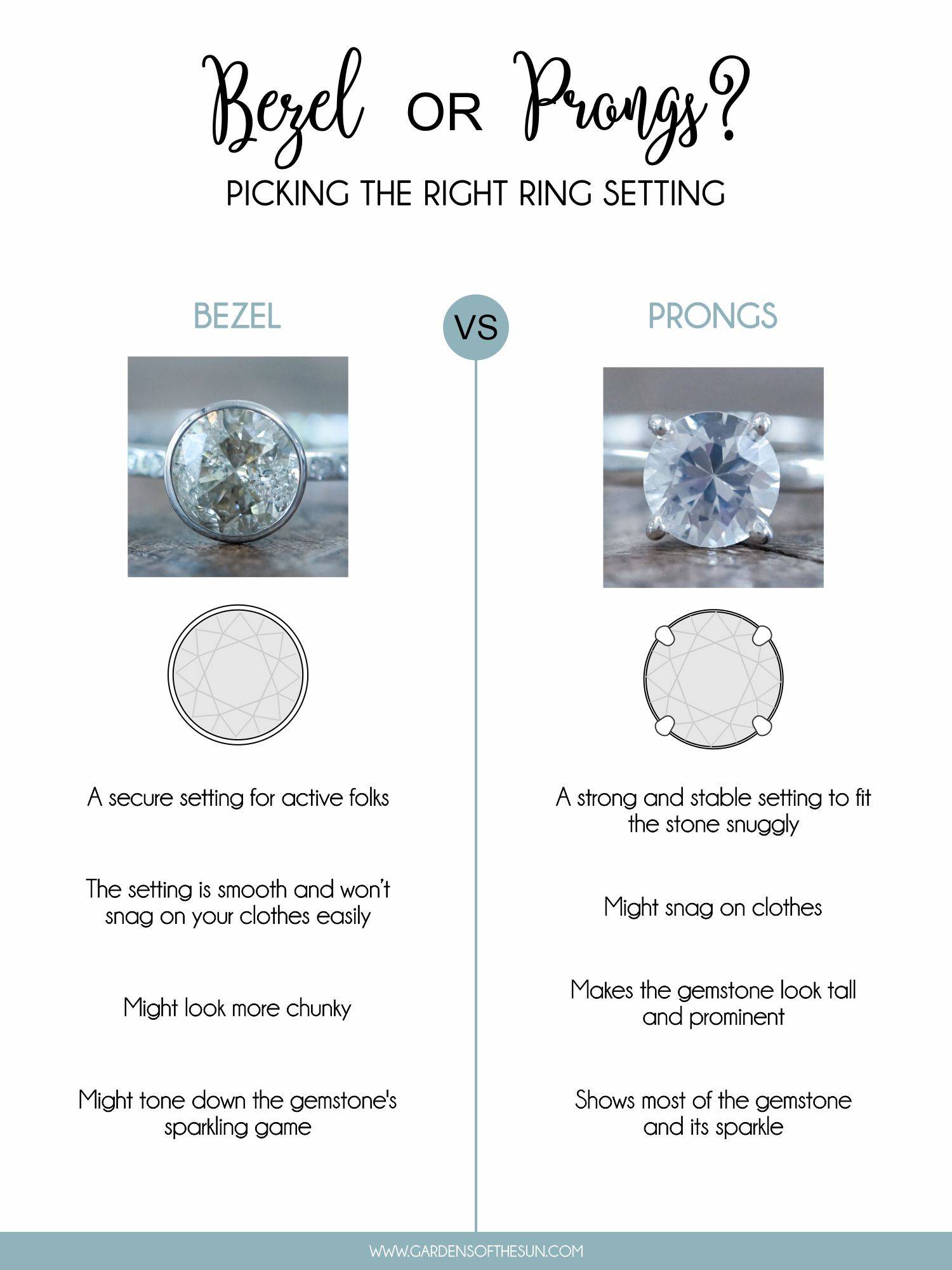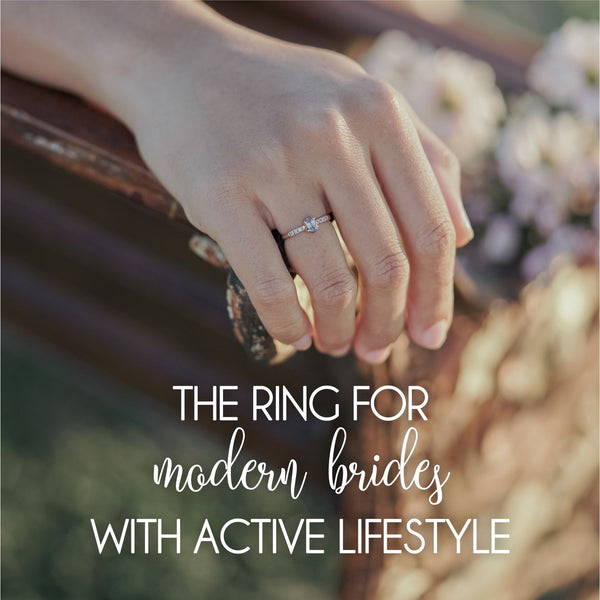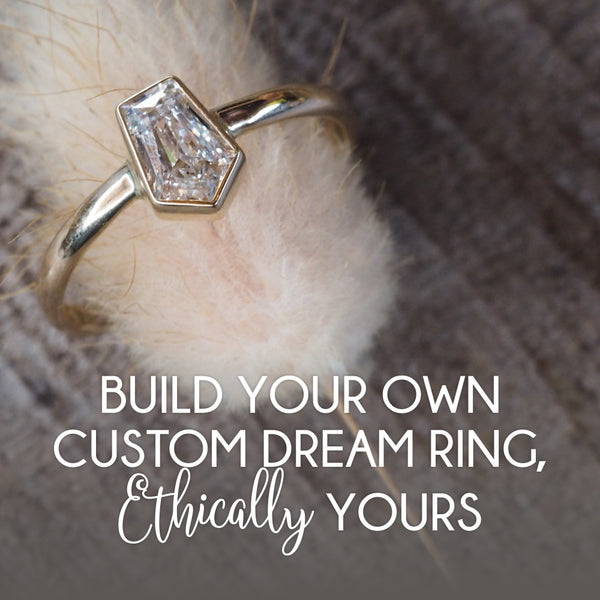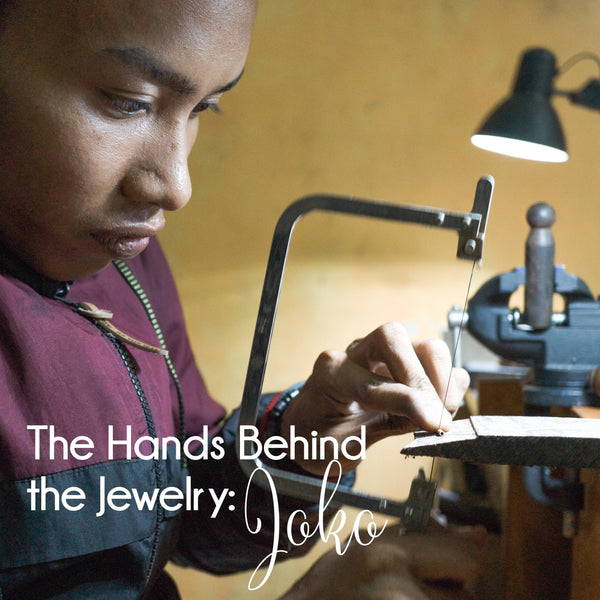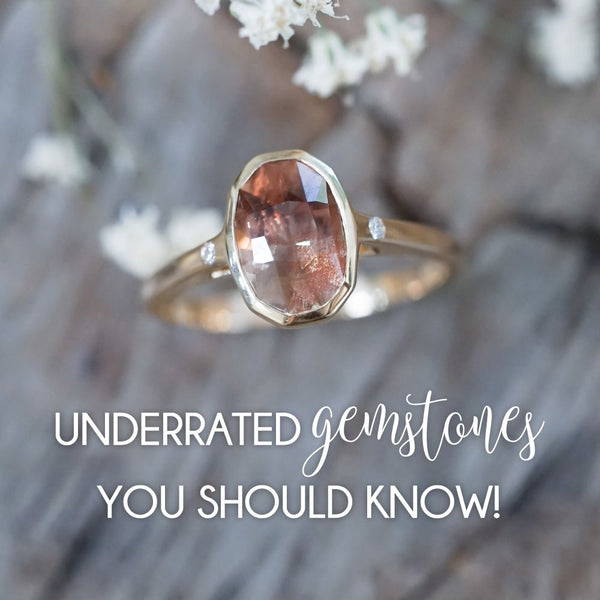Your Cart is Empty
(Updated March 2022)
When you’re picking the right stone for a custom ring, don’t forget about all the other details! What custom ring details could we be talking about? Its design, of course!
Specifically, how to bind the stone to the ring in the most attractive way possible. Aka the setting of the stone. The setting is almost as important as the stone you choose.
A setting affects how stones are held in place, how visible they’ll be, and how easy the ring will be to take care of.
So what are prongs? And what’s a bezel setting?
Which one should you go for when you're customizing your ethical dream ring? What are the pros and cons of the settings we offer? So many questions!
Don't panic! We're here to help.
Most of the stones in the Pastel Sapphire Ring Set are held in prongs, while its nesting band uses bezel setting!
Prongs
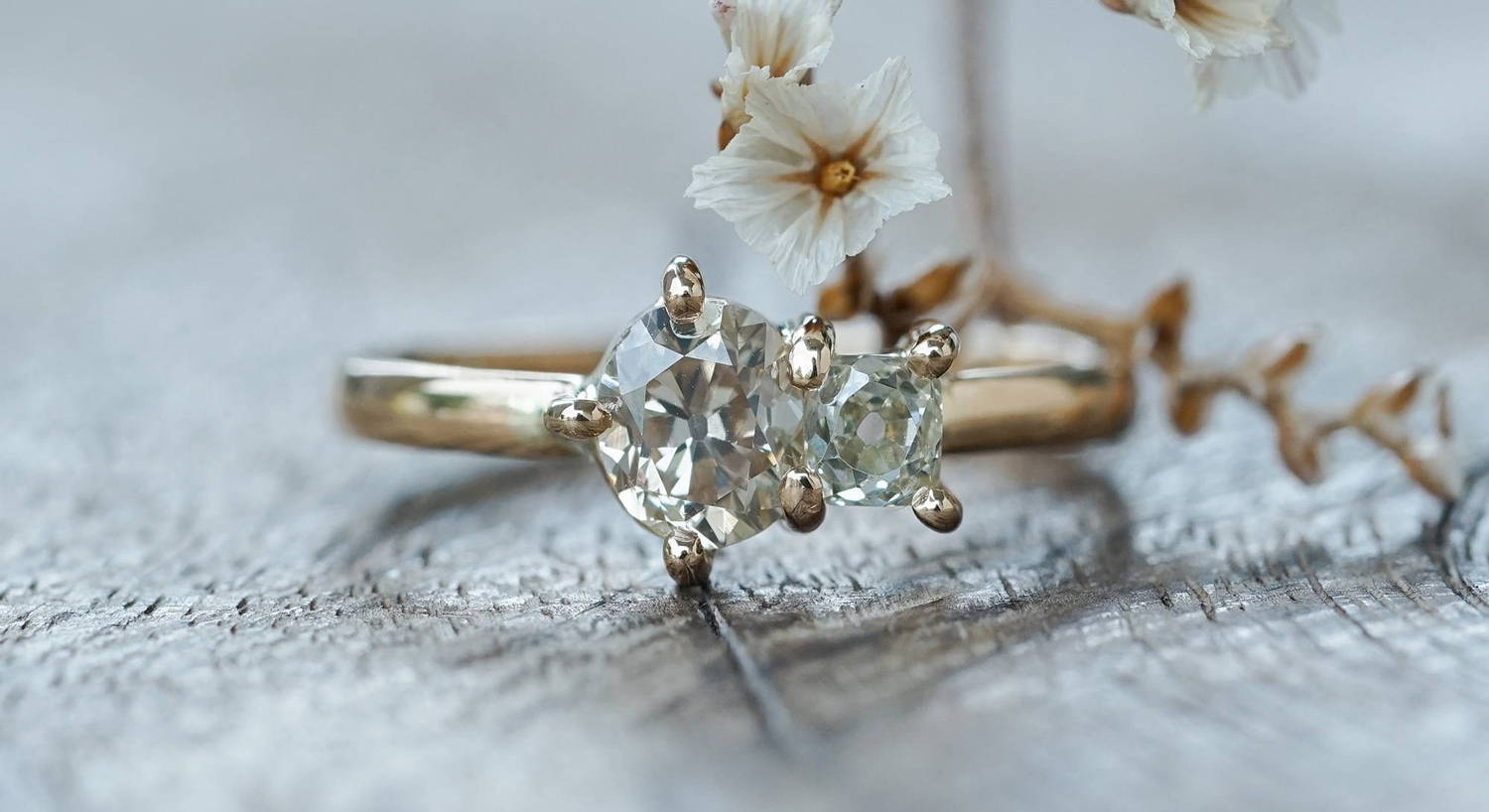
This Double Borneo Diamond Ring is wrapped up in ethical gold and set in prongs. The diamond placement and prong design is pretty special, making them into super duper close besties that share support.
Prongs are like tiny little fingers of metal that grip the gemstone or diamond. This is the kind of design you may think of when you hear engagement ring’, and it’s basically an all-time classic.
PROS
Shows most of the stone, and the intense sparkles that some stones have.
Your classic, go-to engagement setting. Prepare for questions!
Cons
Prongs leave more parts of the stone exposed to getting knocked around.
Prongs may snag on clothing if they’re not done well.
Cleaning is a little trickier, but not super hard!
Over time, the prongs may wear down and break or bend out of shape. This means your stone is at risk of falling out if you don’t regularly check! Prevention and maintenance is super important.
We recommend having the prongs inspected at least every two years to make sure they’re still holding the stone as well as they can. You can do a basic daily inspection yourself too - not so hard, because you're going to be looking at your ring every day anyway!
VARIATIONS
1. HOW many Prongs
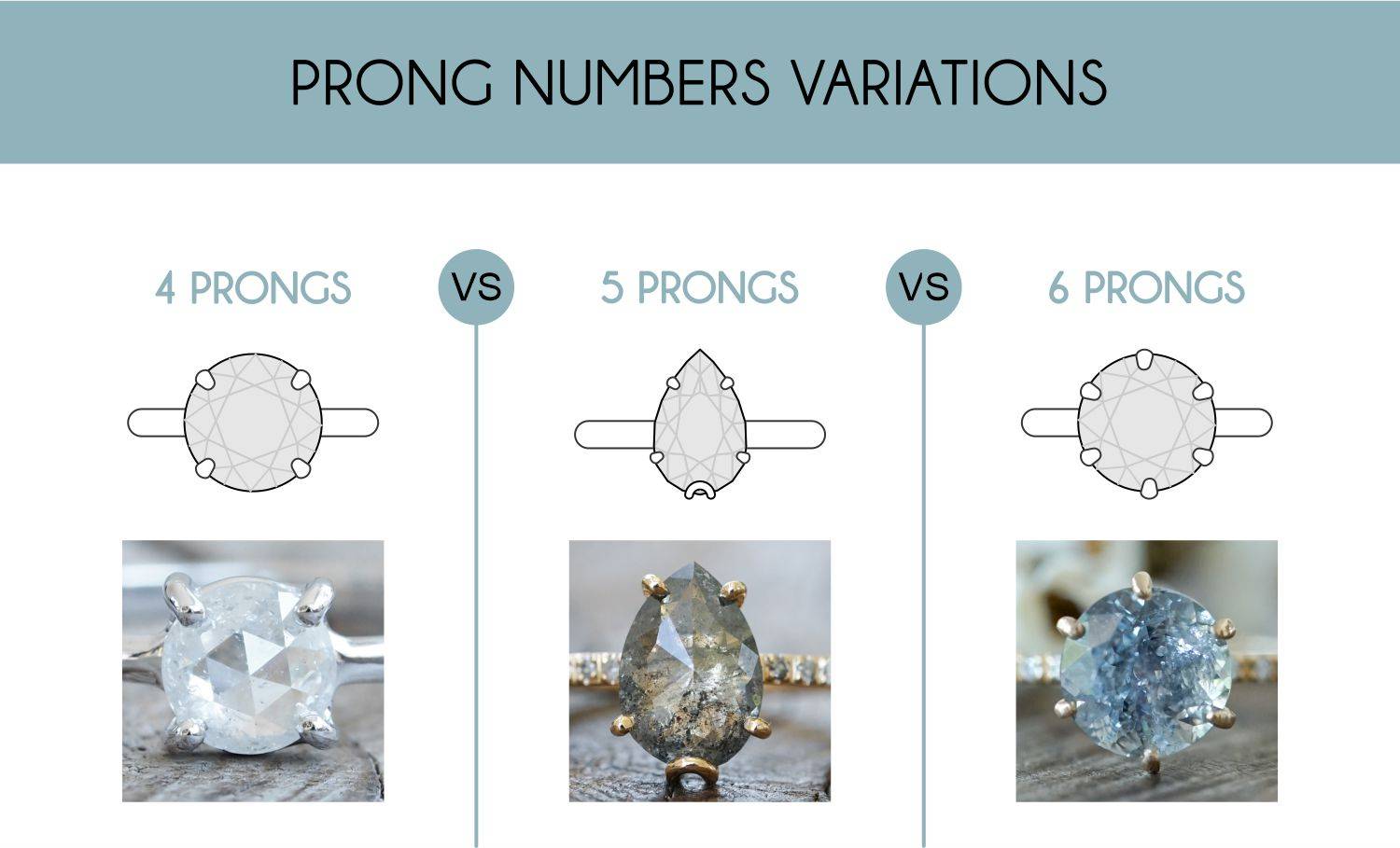
Prong settings often feature four or six prongs. The recommended number of prongs depends on stone size and/or shape. For smaller stones you don’t want to have so many prongs it covers the stone, and makes it look smaller.
Check out this Hexagon Diamond Ring Set, which uses six prongs to cover each corner. You can also see less prongs on the smaller round cut stone topping its nesting ring. Three prongs are enough to keep it secure.


pros
The more prongs, the stronger and more stable it is, securing the stone snuggly.
cons
The more prongs, the fiddlier it is to clean. We recommend that you take your jewelry to be cleaned regularly, so this shouldn't really be a problem.
Using many prongs on a small stone can make the stone look smaller.
2. Basket Prong Setting
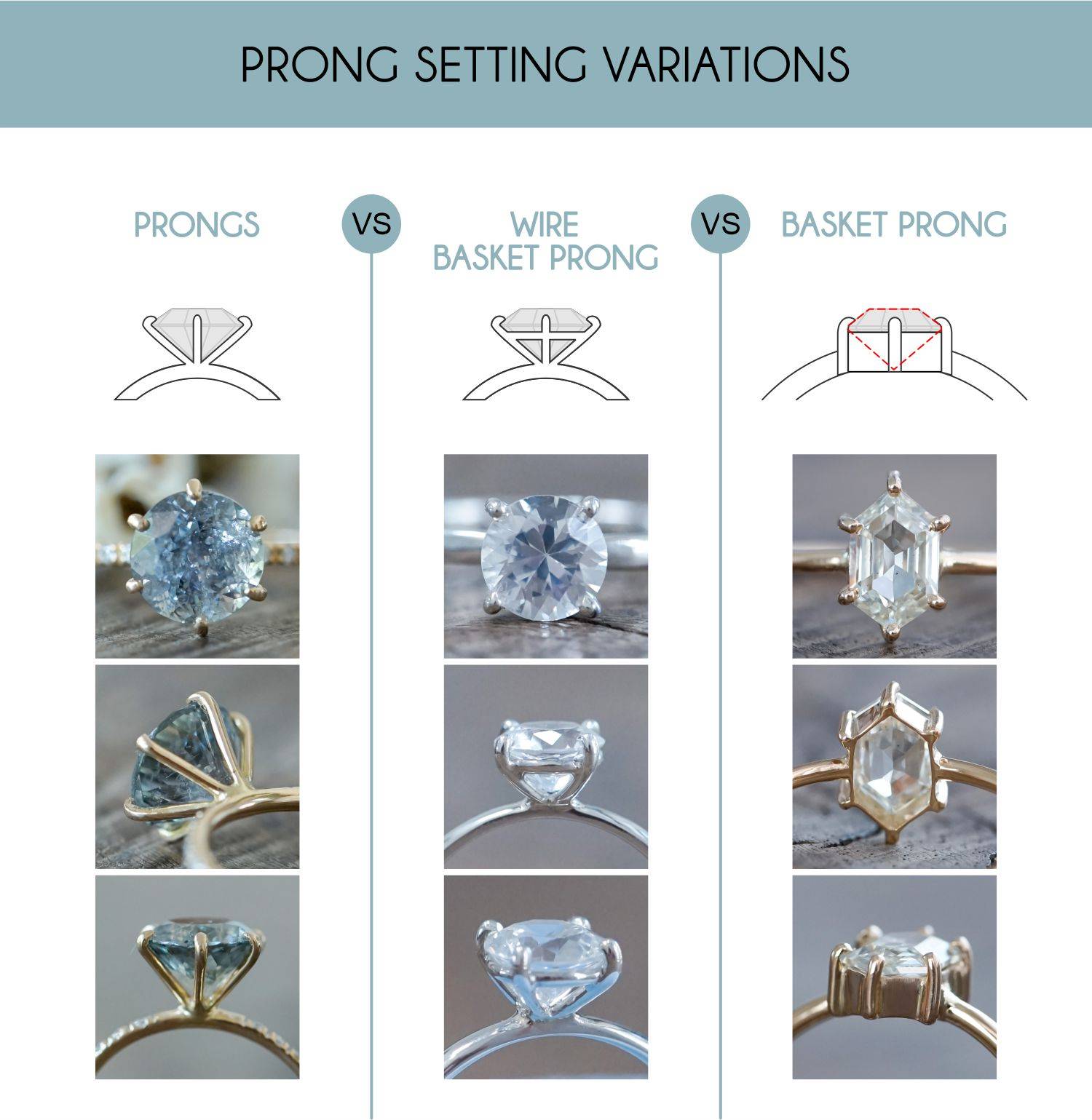
A basket prong setting is very similar to the classic prong setting. Basket settings have a base into which the diamond is set (a 'basket' shape) as well as the prongs itself.
This Oval Salt and Pepper Diamond Ring uses a basket prong setting, and has an additional U-shaped accent. The U-shaped accent is a purely aesthetic choice, and doesn't affect how strong the setting is. But boy is it pretty!


pros
The “basket” reduces the exposure of the stone to knocks and bumps, and the shorter prong length help with the sturdiness as well. This means it's a perfect alternative for those who love a classic prong setting, but want a little more sturdiness.
cons
The additional metal can make it look chunkier from the side.
BEZEL
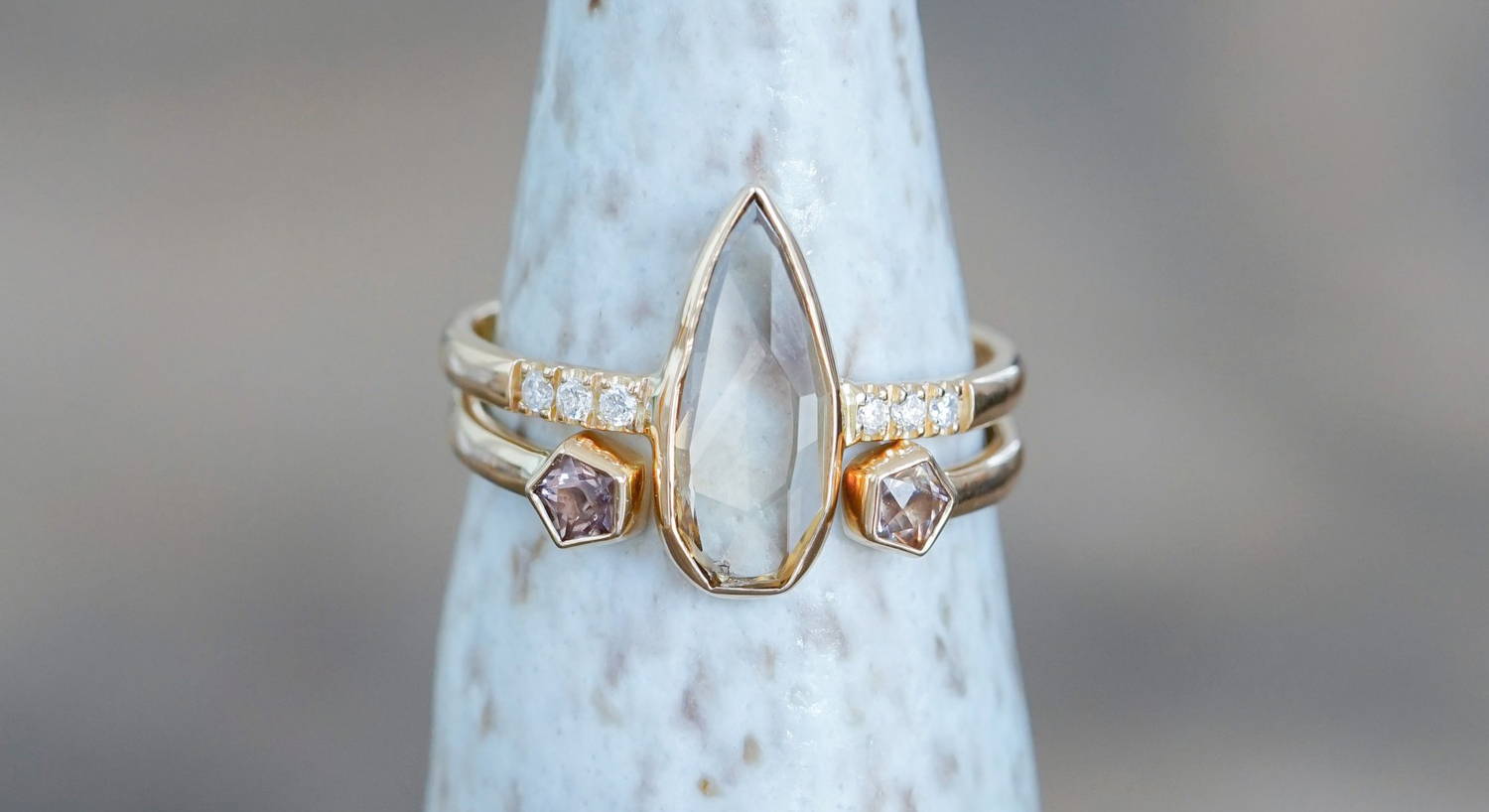
This Pear Diamond and Spinel Ring Set is such a perfect example of how bezels can perfectly 'frame' a stone. The ethical gold is a snug and secure wrap around the elongated pear cut diamond.
A bezel setting means the metal surrounds the gemstone all the way around and holds it tightly in place.
pros
A secure setting for active folks who use their hands a lot.
The setting is smooth and won’t snag on your clothes easily – your best bet for peace of mind, or if you’re clumsy!
cons
Can look chunky if it’s a deeper stone.
Some people feel a bezel setting affects a gemstone’s sparkling game, as it doesn’t let as much light into it.
VARIATIONS
Open Sided Bezel Setting
The stone sits a bit higher, set in an elevated bezel setting that slopes up toward the stone - making it appear larger and more prominent.
You can see on this Berry Spinel Ring that the culet of the stone is exposed, but from the top it looks just like a bezel setting, with the metal protecting the edges of the stone.


pros
It also allows more light in and is less chunky than a full bezel setting. It holds the center stone securely and goes well with different stone shapes and cuts.
- This design allows you to add a tiny stone underneath as a secret additional feature.
cons
It tends to sit higher on the finger, which exposes more of the stone to potential damage.
Can take more effort to clean because of the gaps and niches in the ring design.
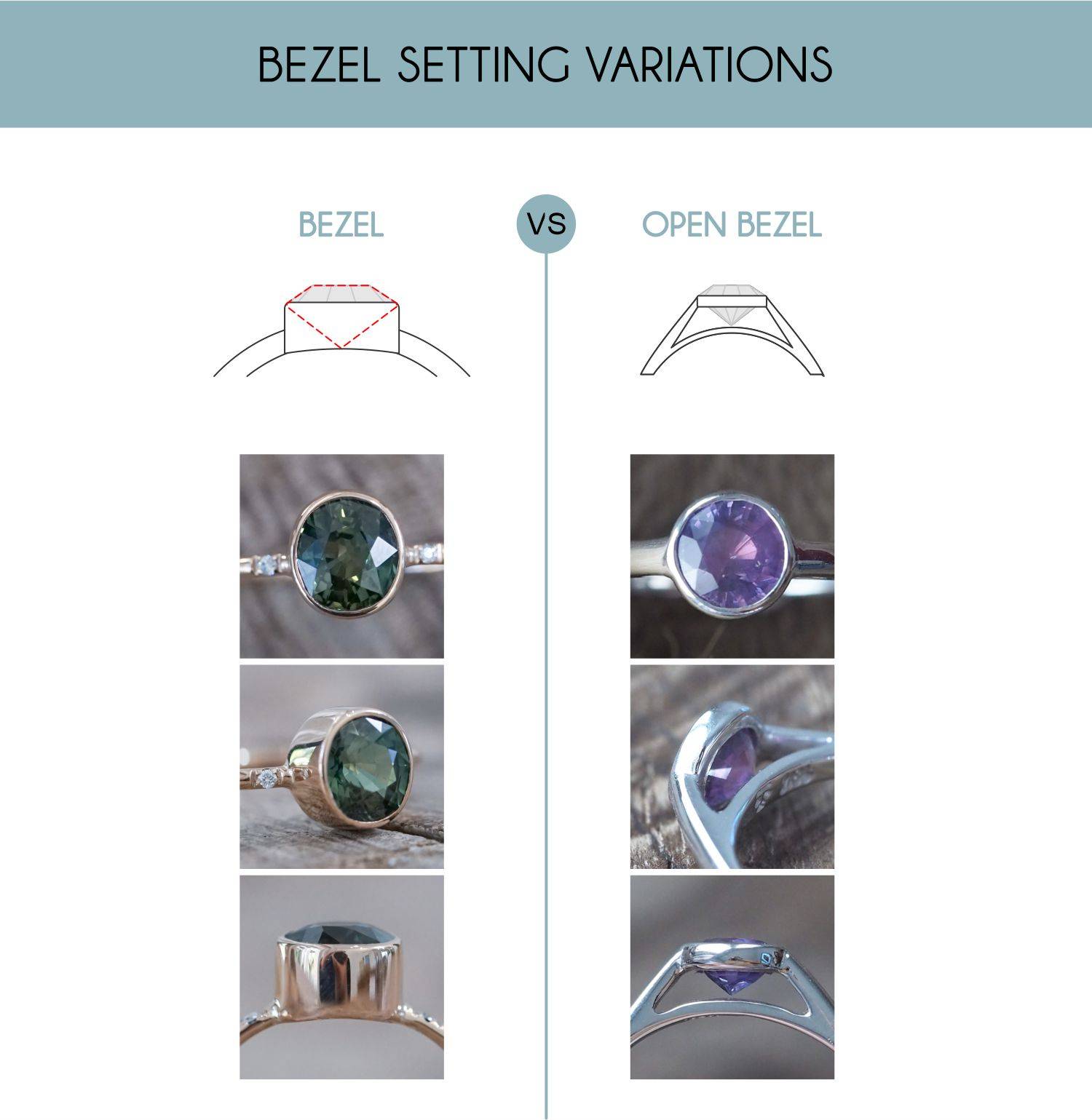
The main thing to remember is how the stone will sit in the setting you chose. Take a quick moment to imagine what it will look like when paired together - there’s really no right or wrong answer. But if you’re worried about your choice, contact us a design draft or mockup of the jewelry you customized when you buy from our Build Your Own series, where you get to create a custom (engagement) ring.
Yes, this applies for both gold and silver, because we’re kinda awesome like that. And we just want you to be happy with your choices.
Since we’ve now added bracelets and necklaces to our arsenal of custom jewelry, which piece of jewelry will you customize first?
